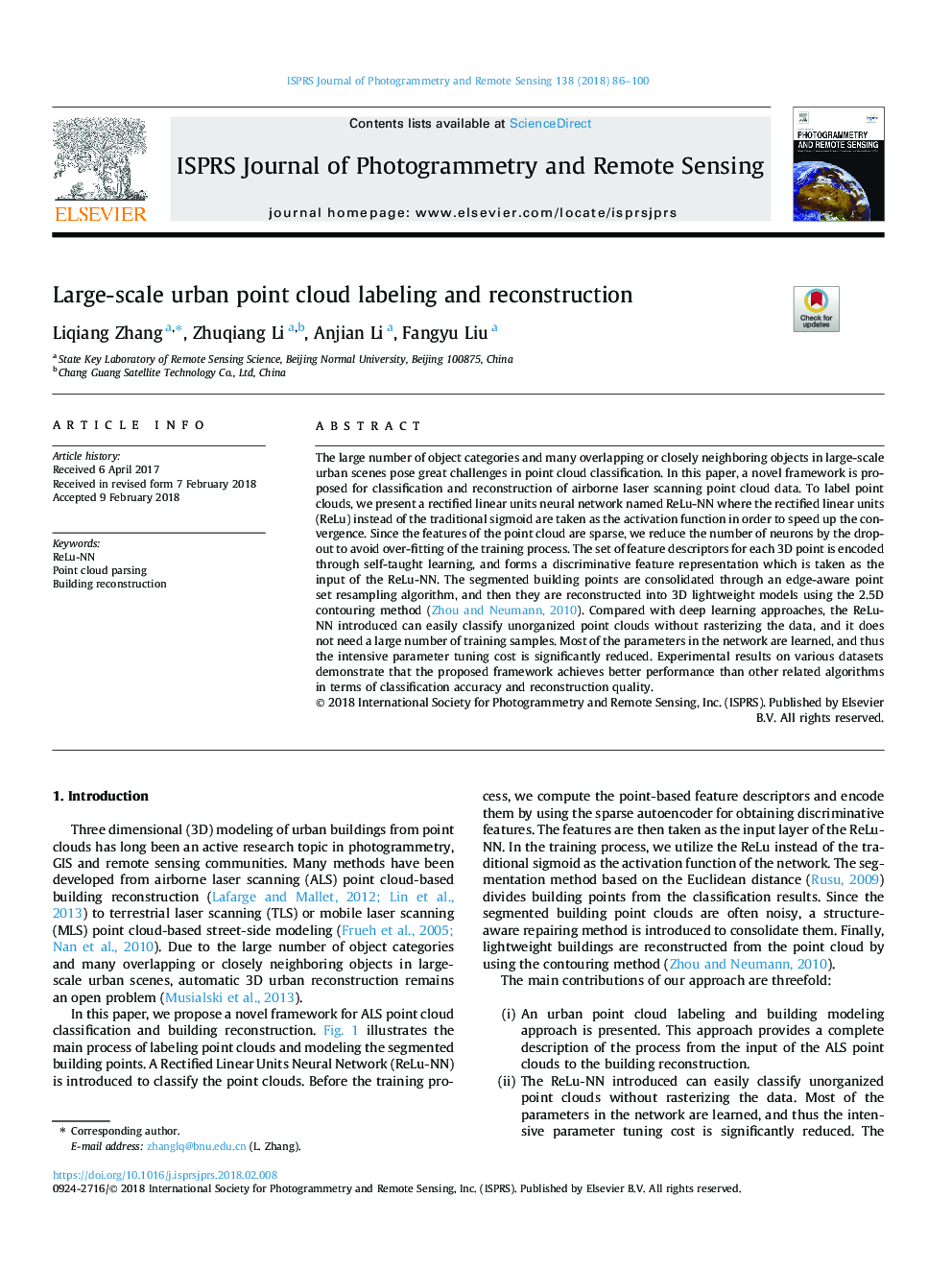| Article ID | Journal | Published Year | Pages | File Type |
|---|---|---|---|---|
| 6949199 | ISPRS Journal of Photogrammetry and Remote Sensing | 2018 | 15 Pages |
Abstract
The large number of object categories and many overlapping or closely neighboring objects in large-scale urban scenes pose great challenges in point cloud classification. In this paper, a novel framework is proposed for classification and reconstruction of airborne laser scanning point cloud data. To label point clouds, we present a rectified linear units neural network named ReLu-NN where the rectified linear units (ReLu) instead of the traditional sigmoid are taken as the activation function in order to speed up the convergence. Since the features of the point cloud are sparse, we reduce the number of neurons by the dropout to avoid over-fitting of the training process. The set of feature descriptors for each 3D point is encoded through self-taught learning, and forms a discriminative feature representation which is taken as the input of the ReLu-NN. The segmented building points are consolidated through an edge-aware point set resampling algorithm, and then they are reconstructed into 3D lightweight models using the 2.5D contouring method (Zhou and Neumann, 2010). Compared with deep learning approaches, the ReLu-NN introduced can easily classify unorganized point clouds without rasterizing the data, and it does not need a large number of training samples. Most of the parameters in the network are learned, and thus the intensive parameter tuning cost is significantly reduced. Experimental results on various datasets demonstrate that the proposed framework achieves better performance than other related algorithms in terms of classification accuracy and reconstruction quality.
Keywords
Related Topics
Physical Sciences and Engineering
Computer Science
Information Systems
Authors
Liqiang Zhang, Zhuqiang Li, Anjian Li, Fangyu Liu,
